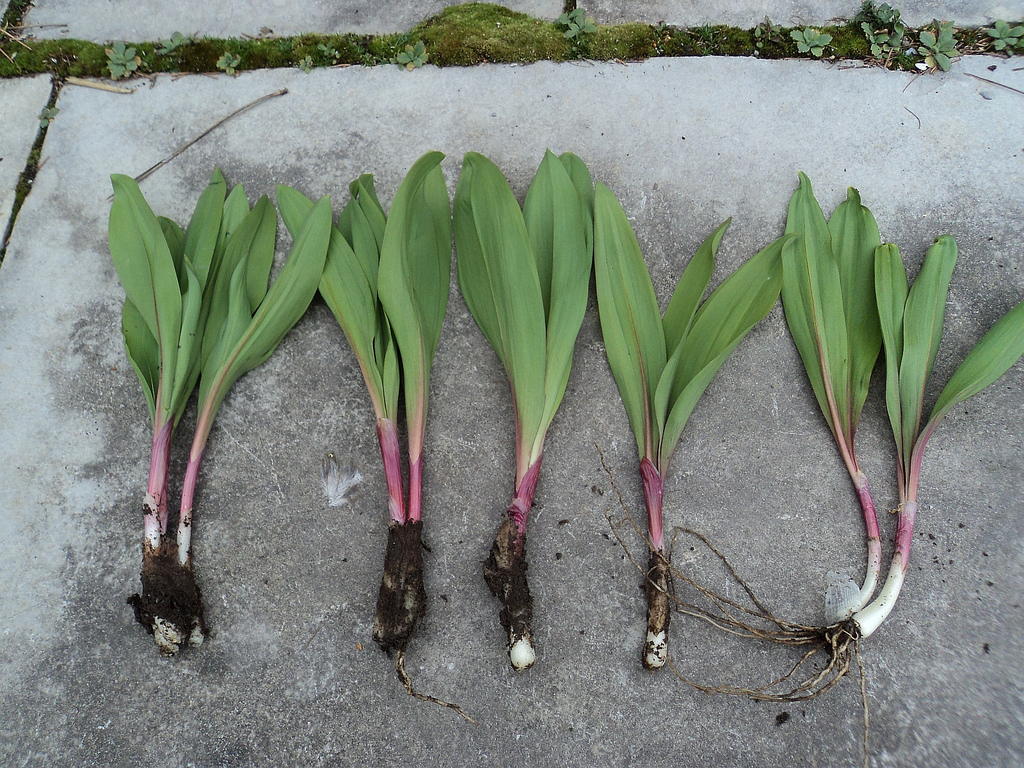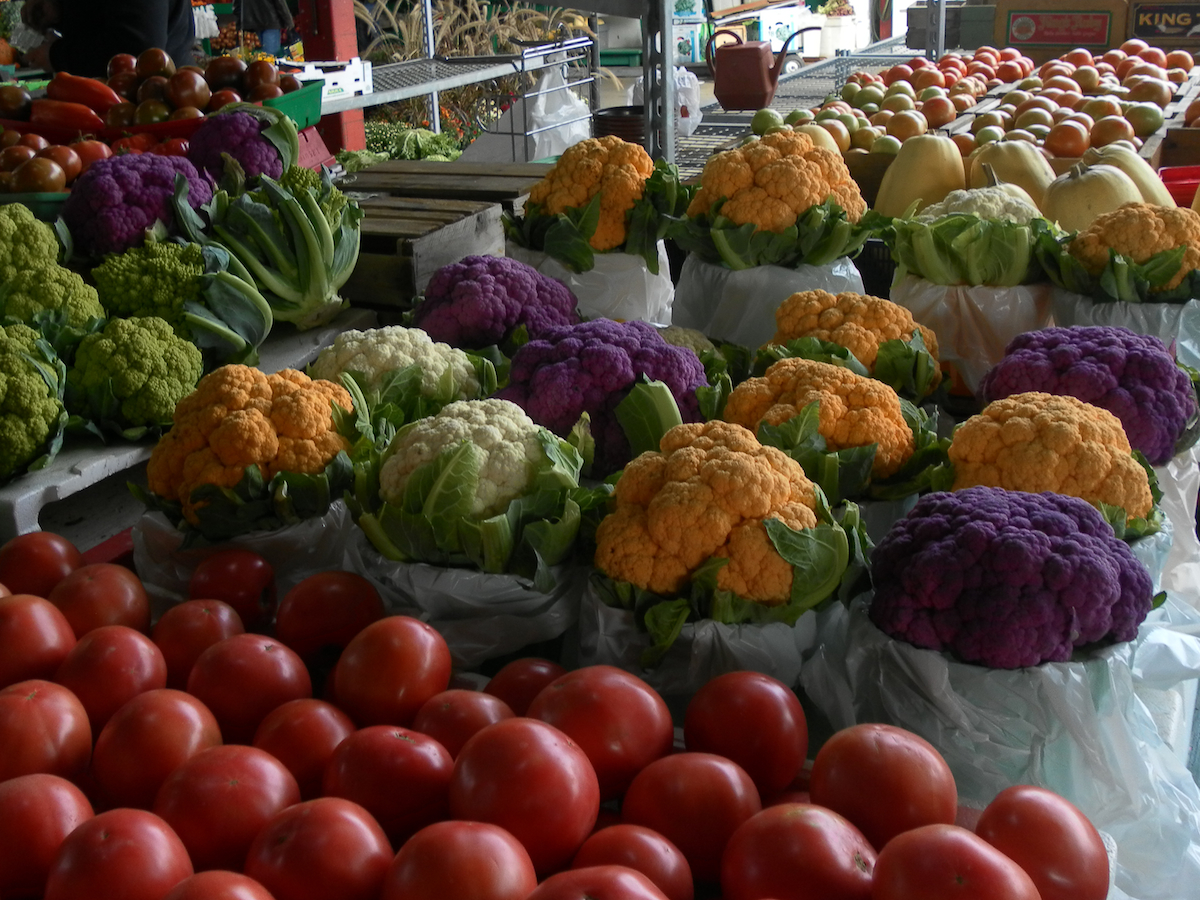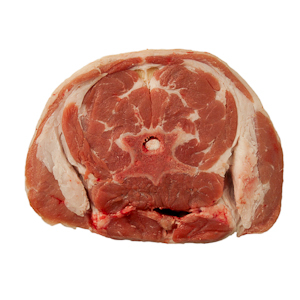by Malcolm Jolley
Chefs and home cooks alike have been quietly bragging this week with the (relatively late) arrival of alluvium ticoccum, or “ramps”. They’re a wild woods onion that grows among hardwood stands (mostly maple) from Chicago to Montreal. I am few days into my stash (which I forage sustainably and with permission every year from a secret location on private property in Durham County) and I’ve enjoyed mine so far with scrambled eggs, a sausage and ramp pasta (with a dash of cream), and a marinade and stuffing for chicken breasts (see recipe below). The latter was delicious: the garlicky, woodsy and earthy taste of ramps really take to poultry. They taste like the forest floor in springtime, which is actually what they are.
So, all should be good in the Ontario culinary universe, right? The first green morsel has emerged from the ground, heralding the official beginning of the growing season, and Upper Canadians can chew, as well as sip, they’re terroir again. Except…
For some reason, many of the authors of menus from the St. Lawrence to Lake St. Clair keep referring to some strange thing the name a “wild leek”. This must stop, for the three reasons below:
1) They don’t taste anything like a leek at all, they taste more like garlic than anything else;
2) The craze for them started in New York City in 90s, whereupon they were called “ramps” and in French they’re called “wild garlic”anyway; and
3) Their proper name means less typing for food writers.
Seriously. They are not leeks. Let them be their own thing. A unique North American harbinger of spring and fresh food.
Ramp Stuffed Chicken Breasts
Portion one on the bone, skin-on chicken breast per person
Preheat oven to 500 degrees Farenheit
Chop as many ramps as you can get your hands on into as small portions as you can: 1-2 centimeters for the stems and julienne the leaves
In a bowl, mix the chopped ramps with a goodly amount of olive oil, salt and pepper, and minced chili peppers, if you like a bit of heat – skip if you don’t.
Add a squeeze of half a lemon, or a table spoon of cider vinegar, if you’re a committed locavore – it’s about adding a touch of acid
Mix it all up with your hands, and then start massaging it, with your hands, in and around the breasts
Jamie Oliver-style, carefully lift up the skin of the breast and stuff as much of the ramp sauce between the skin and meat as you can. Bonus flavour points are awarded if you find and stuff the little fold at the underside of the breast, as though it was a ‘Chicken Kiev’. The point is to get as much rampiness into and around the bird bits as you can manage
If you’re an “A type” and are organised enough to prep the breasts a few hours before cooking, then more flavour points for you: let them sit in the fridge. If, like me, you’re not: don’t worry, be happy – they will be delicious anyway.
Place breasts in a roasting dish and place on the top shelf of your very hot oven. Cook the begeezus out of them for 5-10 minutes, keeping an eye out that the skin is getting golden or not burning. Advance chicken roasters may opt for broiling a this point. The idea is a quick sizzle to get everything going and ensure crispy skin.
Then turn the oven down to 375 and let cook for another 10, 15 or 20 minutes depending on the size of the breasts – consult a book or Google, if you’re unsure. Or keep an eye out – they are generally done when they look and smell done. You can always do a “juices running clear” test if you’re worried, bearing in mind you can always cook them a bit more if they’re underdone, but you can’t “uncook” them.
Let them rest for a few minutes before devouring with a light, tart red wine like a Niagara Gamay.
 Malcolm Jolley is the Founding Editor of Good Food Revolution and Executive Director of Good Food Media, the non-profit organization that publishes GFR. Follow him at twitter.com/malcolmjolley.
Malcolm Jolley is the Founding Editor of Good Food Revolution and Executive Director of Good Food Media, the non-profit organization that publishes GFR. Follow him at twitter.com/malcolmjolley.









Nice recipe Buddy!
Thanks for posting that recipe! Saw your FB status last night after I’d returned from the midweek farmers’ market near my office w my 1st ramps of the season. Have never cooked ramps w chicken before – this will be dinner tonight. Sadly no Niagara gamay in Brooklyn (though my local wine shop has just stated stocking Henry of Pelham back noir and Riesling)…
Either of those would work nicely, Daragh. Or a Barbera. Or Long Island Cab Franc or Merlot? I basically go through a garlic repetoire with the rmps. When scapes appear in about four weeks, the cycle gets repeated. (Also the chives are ready in my backyard – yay!) – Malcolm